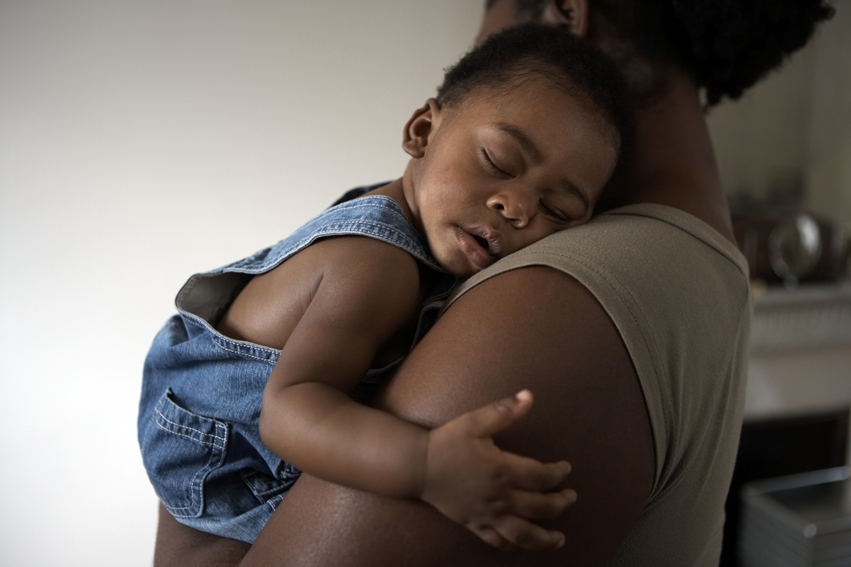8 Common Illnesses In Toddlers & What To Do

Toddlers are prone to bouts of illnesses as they grow and their immune system develops. Find 8 common ones and home remedies you can apply.
1. Diarrhoea
This can be caused by a viral or bacterial infection. Parasitic infections, too much juice, rotavirus, food intolerance, gastrointestinal infection are major culprits. Symptoms include too frequent and watery stool, repeated vomiting and dehydration.
Diarrhea treatment in toddlers is focused on replacing lost fluid and electrolytes, so, administer ORT (Oral Rehydration Therapy). This can be done at home or bought from pharmacies. In addition, increase their fat and fiber intake.
Note that in some cases, diarrhoea may be a symptom of another illness, so, see his paediatrician if nothing helps.
2. Three-day-rash
The cause of this viral disease is unknown but it’s known to be transferable through the respiratory tract. Symptoms include sudden high temperature which may possibly be followed by febrile fits if temperature goes up to 40ºC, rash consisting of bumps, reddish spots (in light skinned toddlers), with small heads.
(Note: This rash should not be confused with Measles).
To control the fever, the child should be given paracetamol. This will also take care of any associated aches or pains. Also, ensure that the child takes plenty of liquids and see your doctor.
3. Ear Infection
This usually occurs after a cold and fever as the tubes connecting your child’s middle ear with the back of his throat may be blocked by fluids. For children below 2, symptoms include increased crying during feeds, fussiness when laid down and trouble sleeping. Older kids may tug at their ears due to painful pressure.
You should see a doctor. Meanwhile, apply a warm towel to troubled ear and prop up his head on a few pillows to relieve the pressure in his ear drums. Never administer antibiotics to your child without a doctor’s prescription, even when symptoms are similar.
4. Urinary Tract Infection (Girls)
Their short urethra provides bacteria with easy access to the bladder. Symptoms include an unpleasant smell or blood in urine, lower abdominal pain, painful urination and a fever.
You’ll definitely have to see a doctor, but while waiting to see one, you can try the following;
- Place towel wrapped hot water bottle on her abdomen.
- Get her to drink plenty of water which will help flush bacteria from her bladder.
As a preventive measure, avoid soaking in baths or washing genitals with soaps as doing so may cause irritation.
READ ALSO: 10 Ways to Boost Your Child’s Immunity
5. Common Colds and Flu
They are most common during cold or rainy seasons and children often get them from other children. Symptoms include sneezing, thick, slimy discharge from the nose, a slight fever, nasal congestion.
For babies between 3 and 6 months, call a doctor if fever is above 37 degrees. For babies above 6 months, boost the immune system by ensuring they get lots of fluids, especially water and natural fruit juice.
To control the fever, give a sponge bath with lukewarm water. You may also let them inhale eucalyptus oil in 2 cups of boiling water to ease congestion.
Ask a doctor to recommend drugs, if necessary, but normally, a flu will just run its course and is usually no cause for alarm.
6. Boils
Poor nutrition, poor hygiene, or weak immune system are some of the causes of boils. If the boils are recurrent, this may be caused by the fact that the child carries the germs inside his body. Also, exposure to harsh chemicals that irritate the skin can cause boils.
Try the following:
- Use hot compress on affected area. This will increase the circulation and allow the body to fight off the infection by pulling white blood cells to the infection site.
- When pus develops, and the boil forms a head, drain the pus.
- See the doctor to prescribe antibiotics to control the spread of any bacterial infection.
- Detox your child by constantly giving him water to drink.
Note that any boil or boils associated with a fever should receive medical attention immediately.
7. Prickly Heat
Heat rash develops when a child sweats so much that his pores clog. For babies still nursing, apply mother’s breast milk to affected area, give your child a lukewarm bath with 2 teaspoons of baking soda in the water and let him air dry before dressing him in loose cotton clothing.
8. Nosebleeds
Extreme temperature, trauma or vigorous nose blowing are some of the causes of nose bleeding. Here’s what to do:
- Stay calm and have your child sit up.
- Lean him forward as you use a handkerchief or a wash cloth to pinch the soft part of his nose with your thumb and forefinger for a full 10 minutes.
- The grip should be firm and the pressure on the nose steady.
- While doing this, try to divert your child’s attention by getting him to watch TV or reading a book.
If nosebleed persists, see your doctor.



Noted. Thanks MIM for sharing.
Thanks for sharing….learning continues
Thanks for the info
thanx mim
This is really helpful. Thanks so much
Thanks